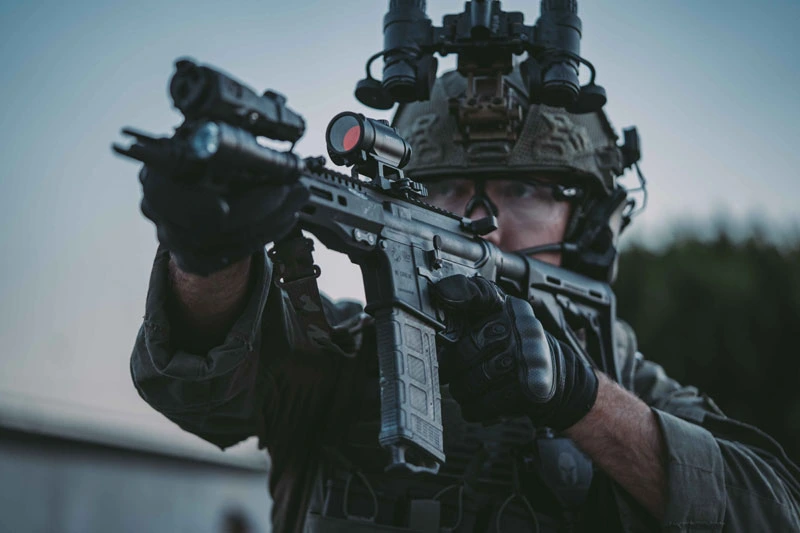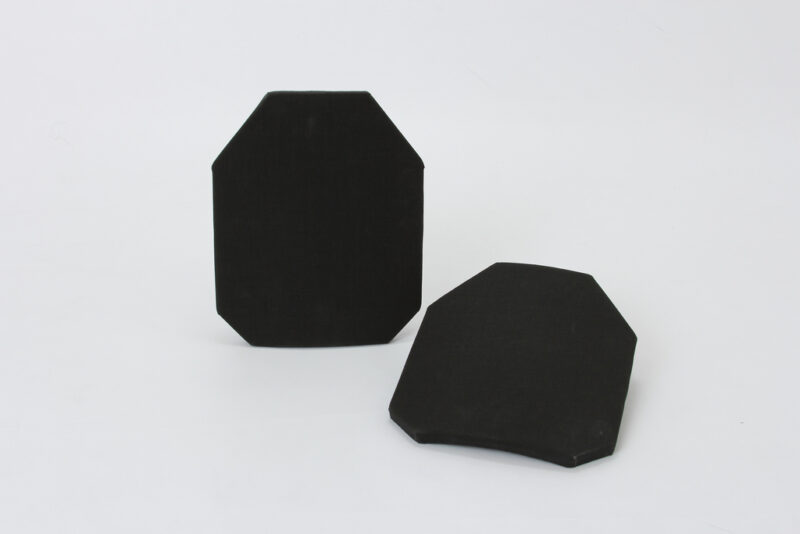NIJ Certified Level IV Plate for AR-15 Protection

Nothing can compare to the sense of security offered by a trusted, high-quality body armor system in personal protection. Advances in body armor technology have enabled civilians, police officers, and soldiers to protect themselves against different hazards. Among the range of armor, the NIJ-certified Level IV plate ranks as one of the strongest protective choices, particularly when used with an AR-15 rifle. Get top-tier protection with Chase Tactical Level IV Armor Plates!
What Is NIJ Certification?
The NIJ is a U.S. Department of Justice division that establishes standards for various law enforcement equipment, including body armor. NIJ Certification guarantees that a body armor system has been tested and can effectively stop bullets, shrapnel, and other projectiles. An NIJ-compliant armor is highly reliable and effective for the intended use.
Seeing “NIJ Certified” on a body armor plate means it has been tested to the maximum and meets stringent criteria, safeguarding you from ballistic threats.
What is a Level IV Plate?
Level IV is among the highest protective ratings found in personal armor. It is built to deflect high-velocity armor-piercing rounds, and as such, it is the best choice when confronted with heavy-duty threats like.30-06 armor-piercing rounds (which are frequently used in military-grade sniper and other high-powered rifles).
In the NIJ levels of protection, the plates are ranked from Level I to Level IV according to the caliber and power of rounds that they can withstand:
- Level I: Stopping low-velocity rounds such as small calibers (.22, 9mm)
- Level II: Stopping medium velocity rounds such as 9mm and.40 S&W
- Level III: Is made for high-velocity rounds such as 5.56mm NATO and 7.62mm NATO
- Level IV: Deflects high-caliber armor-piercing rounds such as the .30-06 AP and even bigger, more powerful ones.
Why Are Level IV Plates Necessary for AR-15 Protection?

The AR-15 is one of the most widely used firearms in the United States and worldwide. It is reputed for its versatility, light weight, and semi-automatic operation. It shoots 5.56mm NATO and .223 Remington ammunition, which are classified as high-velocity threats.
Though Level III plates can deflect 5.56mm and 7.62mm rounds, they are not armor-piercing rated or capable of stopping higher-powered, longer-range threats. That’s where the Level IV plate is utilized. Here’s why Level IV plates are best suited for AR-15 protection:
1. Armor-Piercing Round Protection
One of the AR-15 platform’s characteristics is its versatility in accepting different types of ammunition. Armor-piercing bullets, such as the M855 Green Tip (commonly used with military models of the AR-15), can penetrate soft armor or even certain Level III plates.
Level IV plates are rated to stop armor-piercing ammunition, providing maximum protection in a worst-case scenario.
2. High-Velocity Threats
The 5.56mm NATO cartridge, which the AR-15 generally uses, is a high-velocity cartridge that travels at velocities capable of easily penetrating lesser armor levels. A Level IV plate is intended to withstand such projectiles and offer consistent protection, even from longer distances.
3. Multi-Hit Capability
Level IV plates are made to endure multiple hits from high-velocity rounds. In the real world, you might not encounter one shot, but a rapid succession of shots from an assailant. A NIJ Certified Level IV plate is constructed to endure multiple hits without seriously compromising its protective capabilities, so a few rounds won’t leave you vulnerable.
4. Versatility
The AR-15 is a versatile rifle, frequently employed for tactical and self-defense applications, which can include responding to varying levels of threats. A Level IV plate is to be ready for various possible threats, ranging from close-quarters combat to long-range shots, where more velocity rounds might be employed.
Types Of Materials Used in Level IV Plates

Level IV plates are manufactured from materials that offer exceptional ballistic resistance and durability, enabling them to stop high-speed armor-piercing bullets and provide the necessary protection. The most frequently used materials for Level IV armor plates are:
1. Ceramic Composite
Ceramic plates are among the most widely used options for Level IV protection. They consist of materials such as boron carbide, silicon carbide, or alumina, which are extremely hard and capable of halting high-energy projectiles. The ceramic absorbs and dissipates the bullet’s energy, cracking and shattering the projectile upon impact.
The disadvantage of ceramic plates is that they are quite brittle compared to other materials and can crack upon a direct impact. They usually have a backing material to contain the projectile fragments and avoid spall (fragments that shatter off the plate and can be injurious).
2. Steel
Steel plates, often made from AR500 steel, are another option for Level IV armor. While steel plates are very resilient and capable of stopping armor-piercing rounds, they are heavier and less comfortable to wear for extended periods than ceramic plates.
Yet, they are frequently less expensive than ceramic plates and provide excellent protection, especially for those requiring ultimate ruggedness.
3. Polyethylene/Composite
Certain Level IV plates utilize polyethylene or composite materials, which are lighter than steel and ceramics but offer excellent protection against high-caliber ammunition. Composite and polyethylene materials are frequently layered to engage the most stopping power while remaining within reasonable weight constraints.
Selecting the Proper Level IV Plate for AR-15 Protection
Selecting the proper Level IV plate for AR-15 protection involves consideration of such factors as:
Weight: The plate’s weight will directly impact your mobility. If you anticipate wearing it for extended periods, opt for the lighter version (e.g., a composite or polyethylene plate).
Durability: Depending on the purpose for which you’ll be using the plate (e.g., law enforcement, military, personal defense), you may prefer a plate with increased durability. Steel plates, for instance, are extremely hardy but also heavier.
Cost: Ceramic and composite plates can be expensive, but they often offer a better balance of protection and weight. Steel plates are generally cheaper but heavier and less comfortable.
Size and Fit: Ensure the plate is sized correctly to cover vital areas such as your chest and back. Proper fit is essential for effective protection and comfort.
Conclusion
NIJ-certified Level IV plates provide the greatest protection from ballistic threats and are best used with the AR-15 rifle. As a tactical operator, member of the military, or civilian seeking advanced personal protection, a Level IV plate is your best option for protection against high-velocity and armor-piercing rounds.
When selecting body armor, consider the weight, material, cost, and comfort to find the right balance of protection and mobility.
Frequently Asked Questions
Will a Level IV plate stop all bullets?
Although Level IV plates provide the most protection, they are used mainly to protect against high-velocity armor-piercing rounds and larger calibers. They might not defeat some specialized rounds, such as incendiary or explosive rounds, so knowing your particular threat is key.
How long does a Level IV plate last?
The durability of Level IV plates depends on the material and maintenance. Ceramic plates last longer with proper care and typically carry a 5-year warranty against defects. Steel plates can last significantly longer but require regular damage checks. Always follow the manufacturer’s care and replacement instructions.

